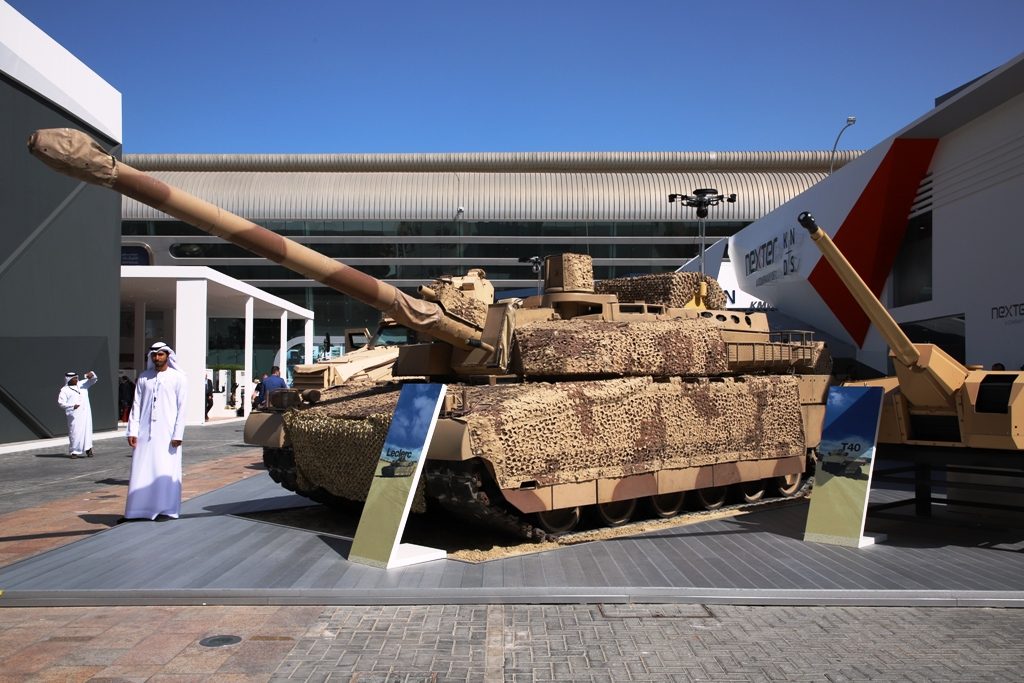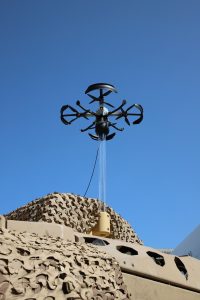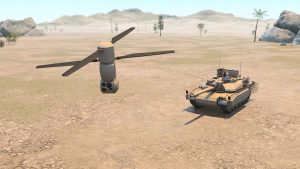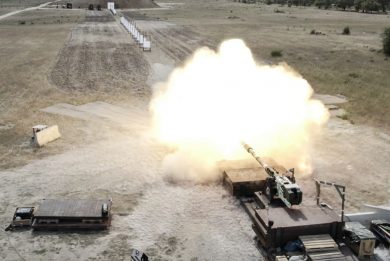
IDEX 2019: Nexter launches the Augmented Leclerc, UAVs becoming the long eyes of the MBT
Following the work done on the Titus 6×6, Nexter decided to bring unmanned elements also into the heaviest product of its portfolio, the Leclerc Main Battle Tank. In service with the United Arab Emirates, which deployed some of them at the impressive demonstration that ran daily at IDEX 2019, and in the French Army, the Leclerc MBT is being updated in France as part of the Scorpion programme, while the UAE tanks definitely need a midlife upgrade, discussions between the company and the customer having started some time ago.

The Leclerc Augmenté, or Augmented Leclerc, this is the definition of the upgrade proposal, is definitely not part of the Scorpion package, although it is being proposed to the French DGA, possibly for a further improvement at a later date. The upgrades consist of the Findeagle management system that allows to optimise the use of flying unmanned assets as well as ground unmanned assets, the latter not used however on the MBT due to the problems given by their deployment and, especially, their recovery. The Findeagle can be controlled from the vehicle’s vetronics as well as from tablets used by dismounted personnel. Allowing using UAVs from under armour, the Findeagle considerably reduce the crew exposure, increasing personnel safety. The software is used by the tank commander, and provides him only information relevant to the current situation, filtering what is not of use, thus avoiding cognitive overload. The Leclerc Augmenté is fitted with a tethered quadrirotor UAV, known as IXOS XX, and a free flight UAV, the IXOS LG. While the latter’s prototype is awaited for late 2019, the IXOS XX should start its first demonstrations in April/May; an 8 kg GTOW with payload, it is powered by cable, is totally silent from 100 meters, and its dimensions (without payload) are 700 x 700 x 160 mm. Capable of automatic take-off and landing in day and night, as well as in dust conditions, it has a cruise speed of 10 km/h and can resist a wind up to 45 km/h. Fitted with an inertial measurement unit and a GPS, which provide centimetric accuracy, it also features a 3 axis obstacle avoidance system, and is capable to carry multiple payloads. The gimbal payload, which weighs less than 2 kg, carries a 1080 pixels resolution daylight sensor with a x36 zoom, the field of view ranging from 2.3° to 63°. The uncooled thermal sensor is based on a 640 x 480 array, the thermal camera being fitted with a x2 add-on providing a FoV of 17.7° or 32.8°. Day identification range is 3.6 km for a vehicle and 1 km for a human, while at night the respective ranges are 400 and 300 meters. The gimbal sensors are fitted with a mobile object tracking capability, the ball also hosting a 5 km-range laser rangefinder. A radio payload ensuring communications over 2 km and weighing less than half a kilo can also be installed, the IXOS XX having a multiple payloads capability. In place of the gimbal payload an eLSAS (extended Local Situational Awareness System) can be installed; it has a similar weight and contains four one-axis cameras, the day one with a 1080 pixels resolution and a x10 zoom providing a FoV of 5.4° to 56°, the IR sensor being based on a 640 x 512 array with a x8 zoom, wide FoV being 95°.

The free flight micro-UAV, when folded, has the dimensions of a 1 litre bottle. Fitted with IMU and GPS systems providing location with hexametric accuracy, the IXOS LG features counter-rotating rotors and is powered by electric motors that run for half an hour on battery power. Fitted with the same automatic take-off and landing system than its bigger brother, it is silent from 50 meters and can reach a cruise speed of 40 km/h, sustaining a 45 km/h wind. MTOW is 2 kg, half of which made of the gimbal payload containing one camera similar to that used in the eLSAS, the ball being also fitted with a laser rangefinder with 1 km range.
These assets will allow i.e. the tank commander to identify the best way or to see opponents changing direction, thus being able to react in real time accordingly.
Nexter is considering the use of smaller UAVs compared to the IXOS XX in order to reduce the UAV box dimensions; currently the box is installed on top of the turret, increasing considerably the MBT height thus augmenting its visibility. An air vehicle slightly bigger than the IXOS LG might well be sufficient, the container tube being fixed at the rear of the turret. Should the Leclerc Augmenté operate for long periods also in static position, the need to maintain the engine running for power generation purposes might hamper the MBT range; two fuel drums, “Soviet-style” have therefore been fitted at the rear. A small tethered UAV, as the one envisaged in the longer term, might also become solution for other types of vehicles.
Photos by Paolo Valpolini; pictorial courtesy Nexter


